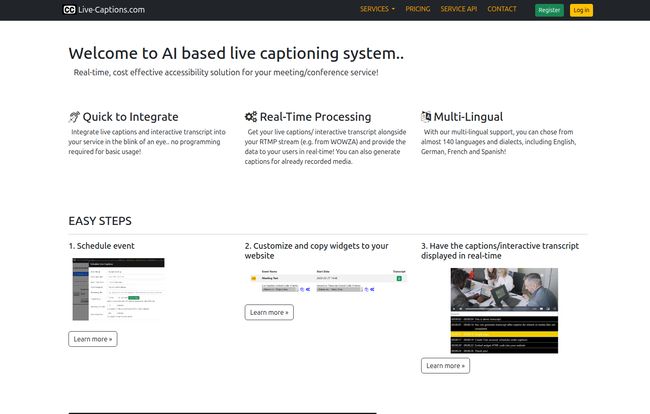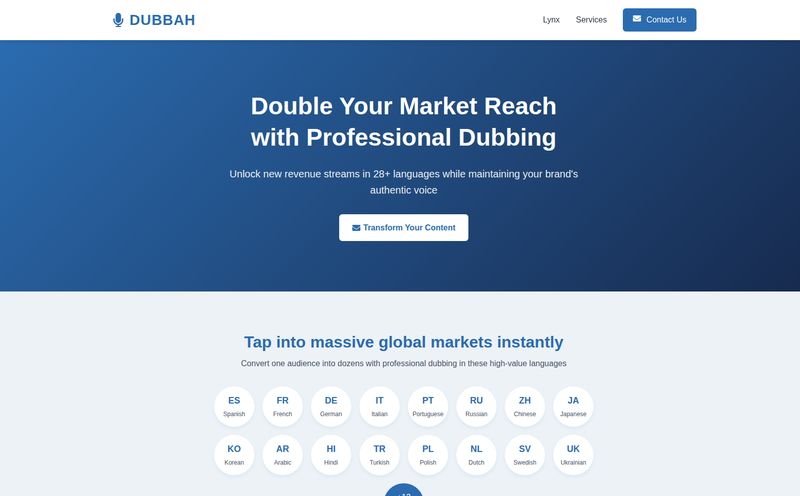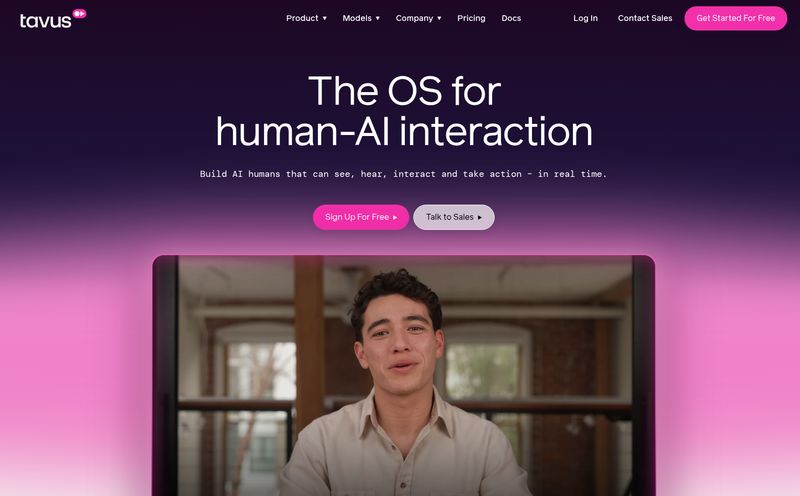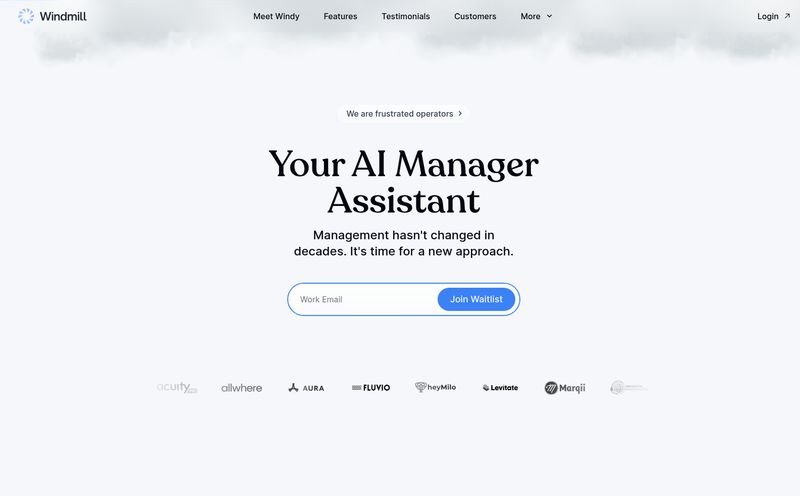I swear, if I have to sit through one more webinar where the presenter sounds like they’re broadcasting from inside a fish tank, I might just lose it. We’ve all been there, right? You’re trying to catch a key piece of information, but between the dodgy mic, the speaker’s accent, and your dog deciding it’s the perfect time to bark at a leaf, you miss the whole point. This isn't just a minor annoyance; for millions of people, it's a hard barrier. That's why video accessibility isn't just a buzzword, it’s a necessity.
For years, getting reliable captions felt like a choice between two evils: ridiculously expensive human transcription services or clunky, inaccurate auto-caption tools that produced pure gibberish. So when a tool like Live-Captions.com lands on my radar, my curiosity gets the better of me. It promises AI-powered, real-time, and cost-effective captions. Sounds good. Almost… too good? Let's pop the hood and see what’s really going on.
So, What Exactly is Live-Captions.com?
At its core, Live-Captions.com is basically a universal translator and a court stenographer rolled into one, all powered by some clever AI. You feed it a live audio or video stream—think a conference, a live-streamed event, or a company-wide meeting—and it spits out text captions in real time. Simple as that.
But it's not just for live stuff. Got a library of pre-recorded videos for a training course? It handles that too, generating standard WebVTT caption files that you can plug directly into pretty much any modern video player. This dual-functionality is a pretty big deal. You’re not just buying a tool for your next live event; you’re investing in a solution for your entire media library. It’s about making everything accessible, past and present.
The Features That Actually Matter
A feature list is just a list until you understand why it matters. A lot of platforms brag about features that sound impressive but have zero practical use. Here, the offerings feel more grounded in reality.
More Than Just Words on a Screen: Interactive Transcripts
This is one of those things that seems small but makes a huge difference. Instead of just having captions burned onto the video, Live-Captions.com provides an interactive transcript alongside it. Viewers can scroll through the entire text, search for keywords, and even click on a sentence to jump to that exact moment in the video. For long-form content like lectures or detailed presentations, this is an absolute game-changer for user engagement and information retrieval.
Speaking Your Language (Literally, Almost 140 of Them)
Here’s where my ears really perked up. The platform supports nearly 140 languages and dialects. This isn't just English, Spanish, and German. We’re talking a massive range that opens up your content to a truly global audience. In an increasingly connected world, being able to serve captions in someone’s native language is a massive step towards genuine inclusivity. It's a huge competitive advantage.

Visit Live·Captions.com
For the Tech-Savvy and the Tech-Averse: APIs and Widgets
I appreciate that they cater to different technical comfort levels. If you just want to get captions on your website with minimal fuss, you can copy and paste a simple HTML widget (an iframe). It’s the “plug and play” approach. But for those who want to build something more custom, there’s a full programmatic API. This means developers can integrate the captioning service directly into their own applications, platforms, or services, giving them complete control over the experience. That kind of flexibility is gold.
Let's Talk Money: The Pricing Breakdown
Okay, the part everyone scrolls to first—the price. I’ve seen so many services hide their pricing behind a “Contact Us” wall, so the transparency here is refreshing. The model is a monthly subscription based on usage, measured in minutes. Here’s a quick rundown:
| Plan | Price per Month | Minutes Included | Best For |
|---|---|---|---|
| Free | $0 | Throttled w/ Demo Signature | Testing the waters |
| Explorer | $7 | 60 minutes | Infrequent Users, Hobbyists |
| Basic | $28 | 480 minutes | Small Businesses, Regular Webinars |
| Professional | $113 | 2,400 minutes | Heavy Users, Content Agencies |
| Custom | Contact for Quote | Unlimited | Enterprises, Developers |
My take? The Free plan is a demo, plain and simple. The throttling and signature mean you can't use it for any professional production, but it’s perfect for kicking the tires. The paid tiers are where it gets interesting. The Basic plan, at $28 for 480 minutes, works out to about 6 cents per minute. That's incredibly competitive. But the real jewel for big players is the Custom plan. Why? Two words: SLA Up-Time Guarantee. For any serious business, that's non-negotiable.
The Good, The Bad, and The AI-Generated
No tool is perfect. Let's get real about the highs and lows.
On the plus side, the cost-effectiveness is a massive win. It makes high-quality captioning accessible to creators and businesses that previously couldn't afford it. The ease of integration and the sheer breadth of the language support are also huge selling points. The flexibility to handle both live streams and on-demand video with one tool is just efficient.
Now, for the reality check. The lack of an SLA (Service Level Agreement) on any plan below Custom is a point of concern for me. If you’re runing a mission-critical, one-time-only live event for thousands of viewers, are you willing to risk it on a plan without a guaranteed uptime? I wouldn't. This makes the lower-tier plans better suited for internal meetings or on-demand content where a momentary glitch isn't a catastrophe. Also, usage-based pricing can be tricky for businesses with unpredictable streaming schedules, making budgeting a bit of a moving target.
Who Is This Really For?
After looking it all over, I think the audience for Live-Captions.com is pretty clear:
- Solopreneurs and Small Content Creators: The Explorer or Basic plan is a fantastic, affordable way to make your YouTube videos, online courses, or weekly webinars accessible.
- Small to Medium-Sized Businesses: The Basic and Professional plans are perfect for handling all internal communications, corporate town halls, and customer-facing webinars.
- Enterprise and Developers: Don't even look at the other plans. The Custom plan, with its unlimited minutes, programmatic API, and that all-important SLA, is built for you. It’s for integrating into your own SaaS product or for broadcasting large-scale, high-stakes events.
My Final Verdict
So, is Live-Captions.com the real deal? I think so. It's a solid, no-frills tool that does exactly what it promises. It’s not trying to be the most feature-packed, over-engineered platform on the market. Instead, it focuses on doing one thing—providing fast, affordable, multi-lingual captions—and it does it well.
It successfully bridges the gap between prohibitively expensive manual services and unreliable free tools. While I’d caution against using the lower-tier plans for high-stakes live productions due to the absence of an SLA, it's an exceptional tool for a massive range of other applications. It's a powerful step forward in making the web a more accessible place for everyone.
Frequently Asked Questions (FAQ)
- How accurate are the AI captions?
- Like any AI, accuracy depends heavily on audio quality. With a clear speaker and minimal background noise, you can expect very high accuracy. However, it's not going to be 100% perfect like a human transcriptionist, so be aware of that for highly technical or medical content.
- Can I use this for my Zoom or Teams meetings?
- Yes. You would need to route the audio output from your meeting software into the Live-Captions.com service. This usually requires a virtual audio cable software, but it is definitely achievable for live captioning your meetings.
- What are WebVTT files?
- WebVTT (.vtt) stands for Web Video Text Tracks. It's the modern, standard file format for displaying timed text tracks (like captions or subtitles) with HTML5 video. Most online video players, including YouTube and Vimeo, support it.
- Is the pricing a monthly subscription?
- Yes, it's a recurring monthly subscription based on the number of captioning minutes you need. According to their site, you can top-up if you run out of credits mid-month.
- What's the real difference between using the widget and the API?
- The widget is for simplicity. You copy a piece of code, paste it on your webpage, and you're done. The API is for power and control. It lets developers build the captioning functionality directly into their own software, customize its appearance, and manage it programmatically.
Conclusion
At the end of the day, the quest for better traffic and engagement often leads us down complex rabbit holes of algorithms and strategies. But sometimes, the biggest wins come from something much simpler: being understood. Tools like Live-Captions.com are a potent reminder that accessibility is not just a feature; it's a foundation for growth. It’s not about finding a perfect tool, but the right tool. And for a whole lot of people out there, this might just be it.



